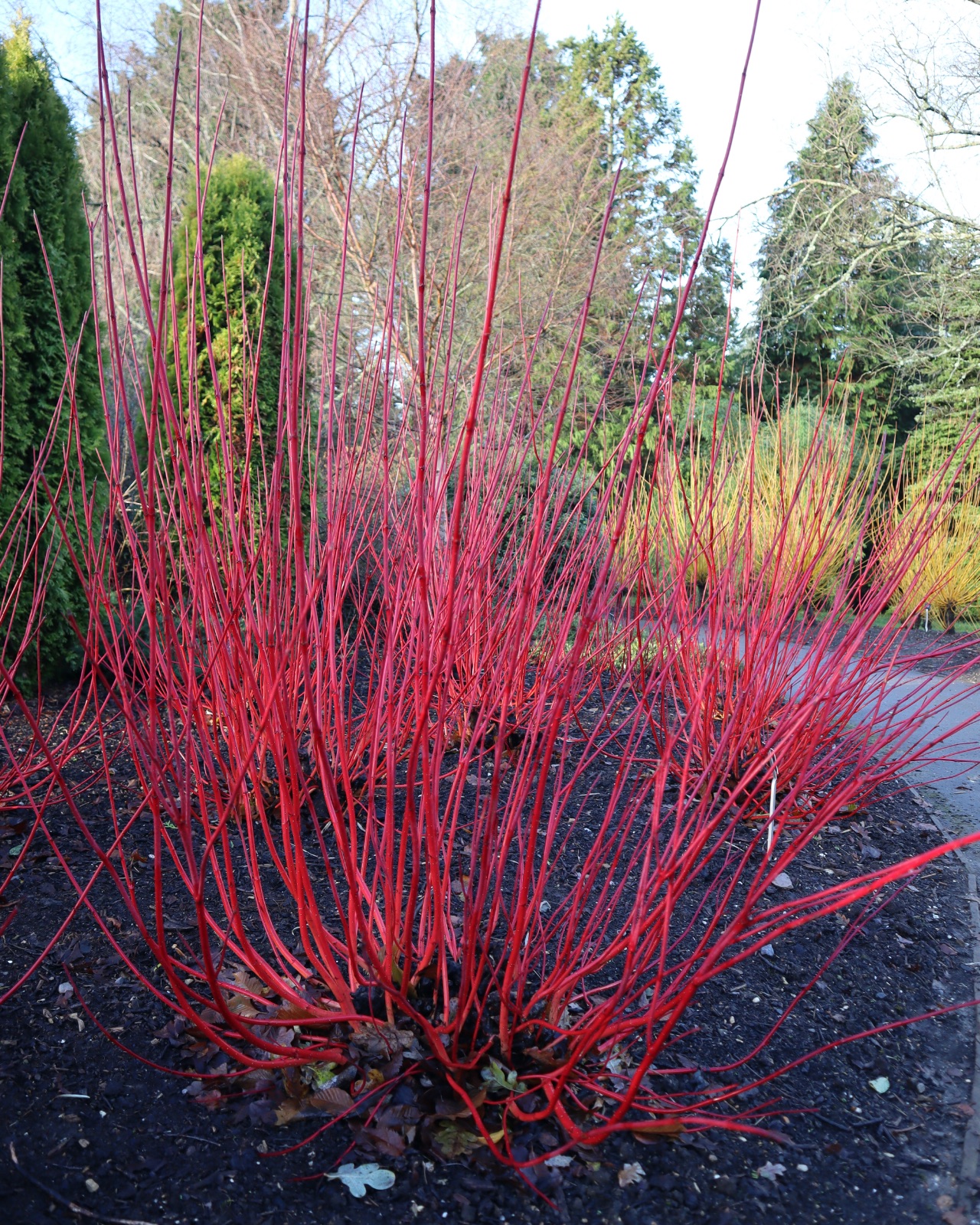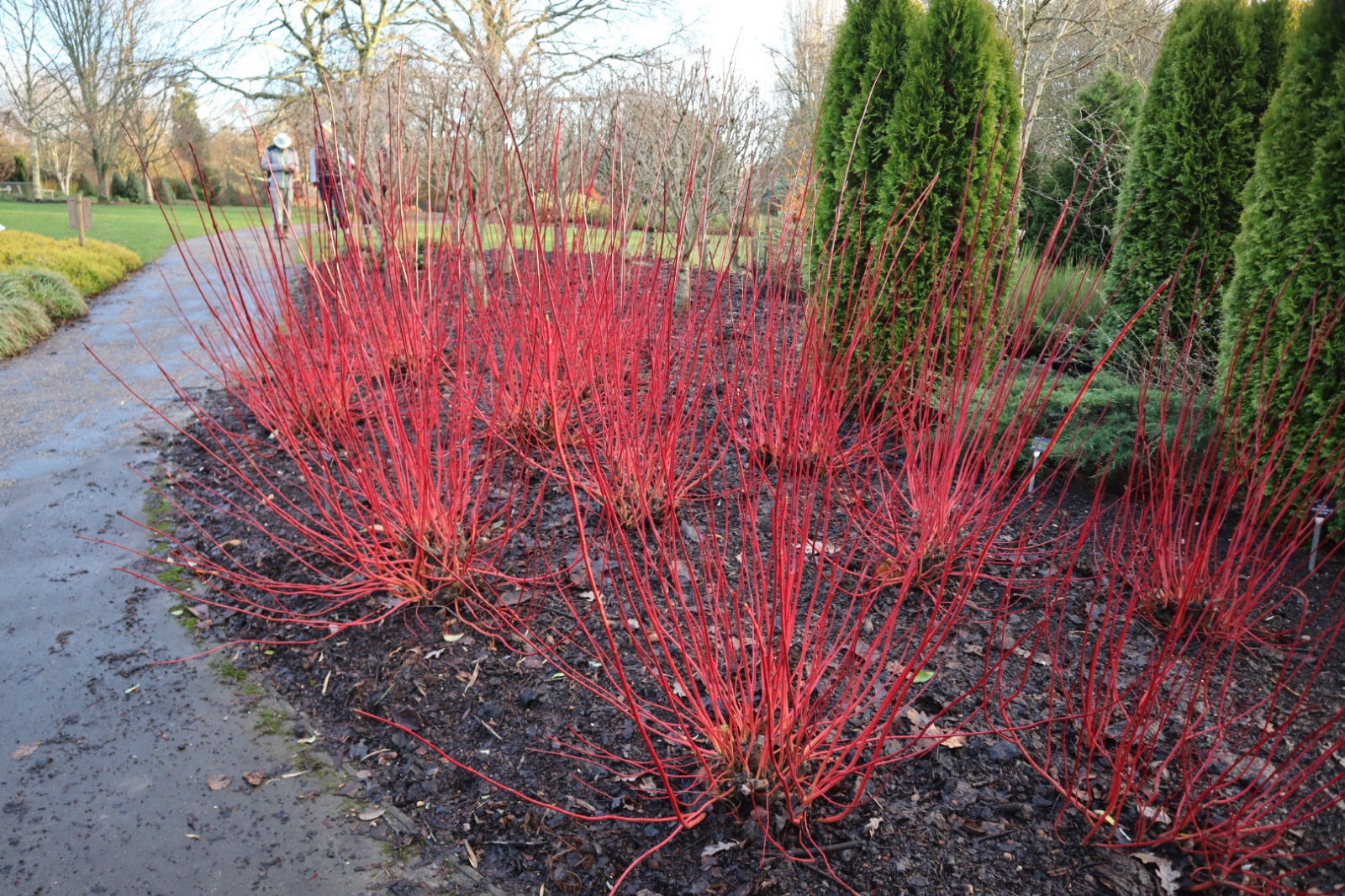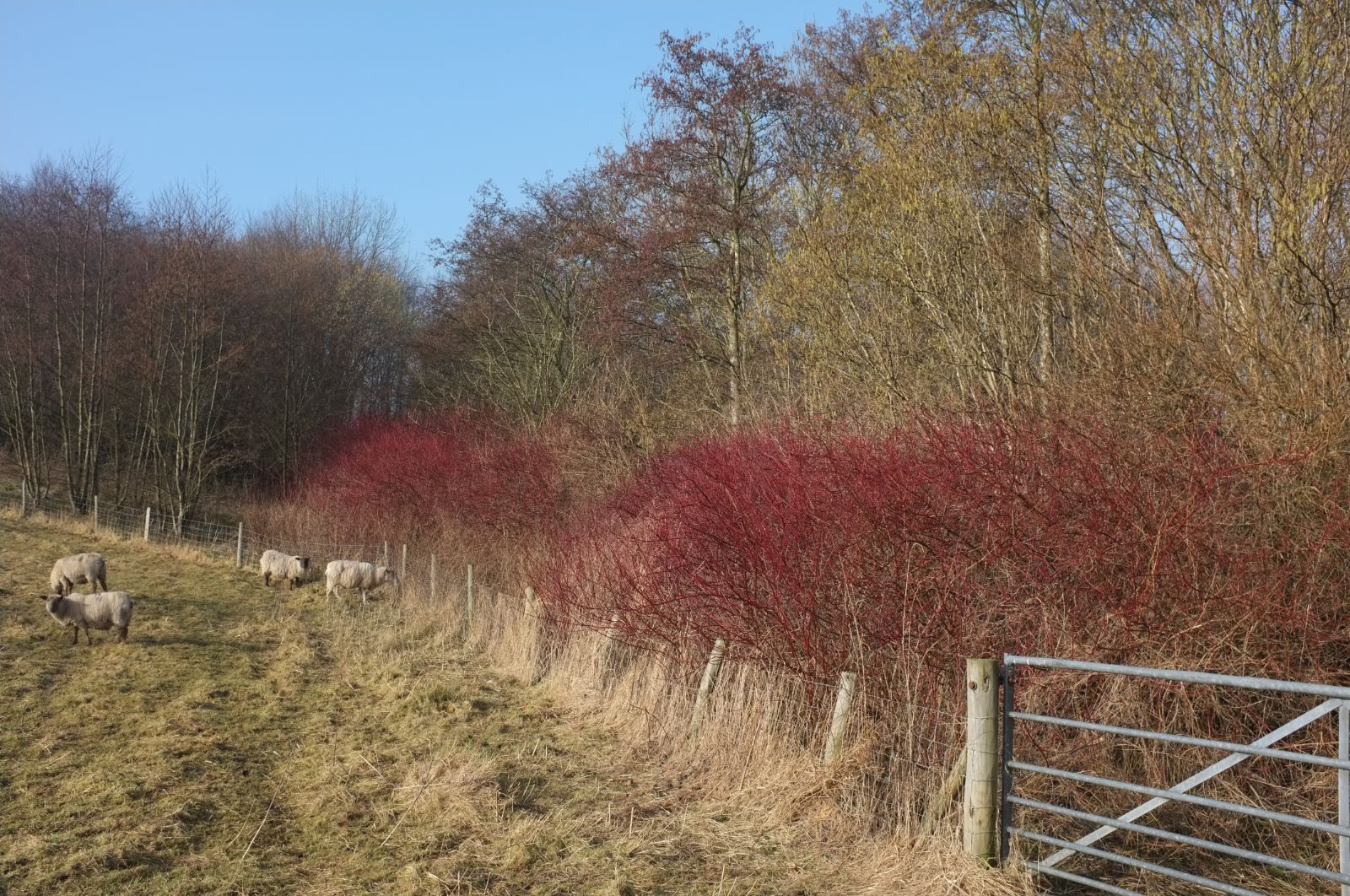Cornus alba
Credits
Article from Bean's Trees and Shrubs Hardy in the British Isles
Recommended citation
'Cornus alba' from the website Trees and Shrubs Online (treesandshrubsonline.
Genus
Synonyms
- C. sibirica Raf.
- C. tatarica Mill.
- Swida alba (L.) Opiz
- Thelycrania alba (L.) Pojark.
Infraspecifics
Other taxa in genus
- Cornus alternifolia
- Cornus amomum
- Cornus asperifolia
- Cornus australis
- Cornus baileyi
- Cornus canadensis
- Cornus capitata
- Cornus chinensis
- Cornus controversa
- Cornus × dunbarii
- Cornus elliptica
- Cornus florida
- Cornus glabrata
- Cornus hemsleyi
- Cornus hessei
- Cornus hongkongensis
- Cornus × horseyi
- Cornus kousa
- Cornus macrophylla
- Cornus mas
- Cornus monbeigii
- Cornus nuttallii
- Cornus occidentalis
- Cornus paucinervis
- Cornus racemosa
- Cornus rugosa
- Cornus sanguinea
- Cornus schindleri
- Cornus sessilis
- Cornus stolonifera
- Cornus wilsoniana
A deciduous, wide-spreading shrub, producing a thicket of stems erect to prostrate; ultimately 10 ft high. Bark of the young shoots becoming in autumn and winter rich red. Leaves opposite, ovate to oval, rounded or wedge-shaped at the base, with short slender points; variable in size, but usually from 2 to 41⁄2 in. long; dark green above, glaucous beneath, with minute flattened hairs on both sides; veins in about six pairs; stalks 1⁄3 to 1 in. long. Flowers small, yellowish white, in cymes 11⁄2 to 2 in. across. Fruit whitish or tinted with blue, about the size of a pea. Stones longer than wide, flattened at each end.
Introduced from Siberia in 1741, and a native also of China. This is a rampant shrub, apt to smother anything less vigorous than itself growing near. It is therefore best adapted for forming an isolated mass on a spacious lawn, or on the banks of a pond, where its deep red stems are remarkably effective all through the winter. A number of varieties are in cultivation, of which the following form a representative set:
From the Supplement (Vol. V)
cv. ‘Elegantissima’. – It was stated that ‘Sibirica Variegata’ is an alternative name for ‘Elegantissima’. In fact, two distinct clones are involved. The true ‘Sibirica Variegata’, which is still grown and propagated in Holland, has broader leaves than ‘Elegantissima’, and there is a pink flush in the marginal variegation. It makes a smaller, sturdier plant, and is hardy even in the coldest parts of Canada, where ‘Elegantissima’ does not succeed. We are grateful to Mr H. J. van de Laar for this information.
cv. ‘Sibirica’. – Graham Thomas tells us that another reason why this dogwood did not thrive in the open at Westonbirt was that it was continually eaten by rabbits. This information came from John Mitchell, who was for many years Curator of the Westonbirt collection. It should be emphasised that the name “Westonbirt dogwood” is applicable only to this very distinct clone, with rather slender stems of the brightest red, but is often misapplied in the trade to ordinary C. alba.
cv. ‘Spaethii’. – The true cultivar is becoming uncommon in the trade. In recent trials held at the Long Ashton Research Station, it was found that of the samples received under this name from eleven nurseries only one was correctly named, the others being C. alba ‘Gouchaultii’ (Gard. Chron., April 11, 1980, p. 25). The true ‘Spaethii’ is not a strong grower, but has a well-marked golden edge to the leaf; ‘Gouchaultii’ is more vigorous, but the colouring is much duller.
'Elegantissima'
Leaves with an irregular margin of creamy white, centre grey-green; winter-stems red. Also known as ‘Sibirica Variegata’; both names are in use, but the one adopted here seems to be the better established, at least in this country. The epithet argenteo-marginata has been applied both to this clone and to ‘Variegata’, but is not a valid name for either.'Gouchaultii'
A variegated form, margined with yellow and stained with rose. It is duller than ‘Spaethii’, and with more green and rose in the centre. ‘Froebelii’ and ‘Tricolor’ differ but little and are no better.'Kesselringii'
Branchlets dark brownish purple; unfolding leaves reddish.'Sibirica'
Synonyms / alternative names
Cornus alba var. sibirica Lodd. ex Loudon
Cornus sibirica 'Westonbirt'
Awards
AGM (2020) AM (1961)
RHS Hardiness Rating: H7
A popular cultivar, having some of the best red-coloured winter stems as well as blue fruits. However, in the trade there are many different clones offered under the same name which make the identity of ‘Sibirica’ rather confusin. (Cappiello & Shadow 2005)
Recent North American introductions with red winter stems include ‘Chovozam’ (Cherry Vodka™) and ‘Chblzam’ (Chief Bloodgood™).



